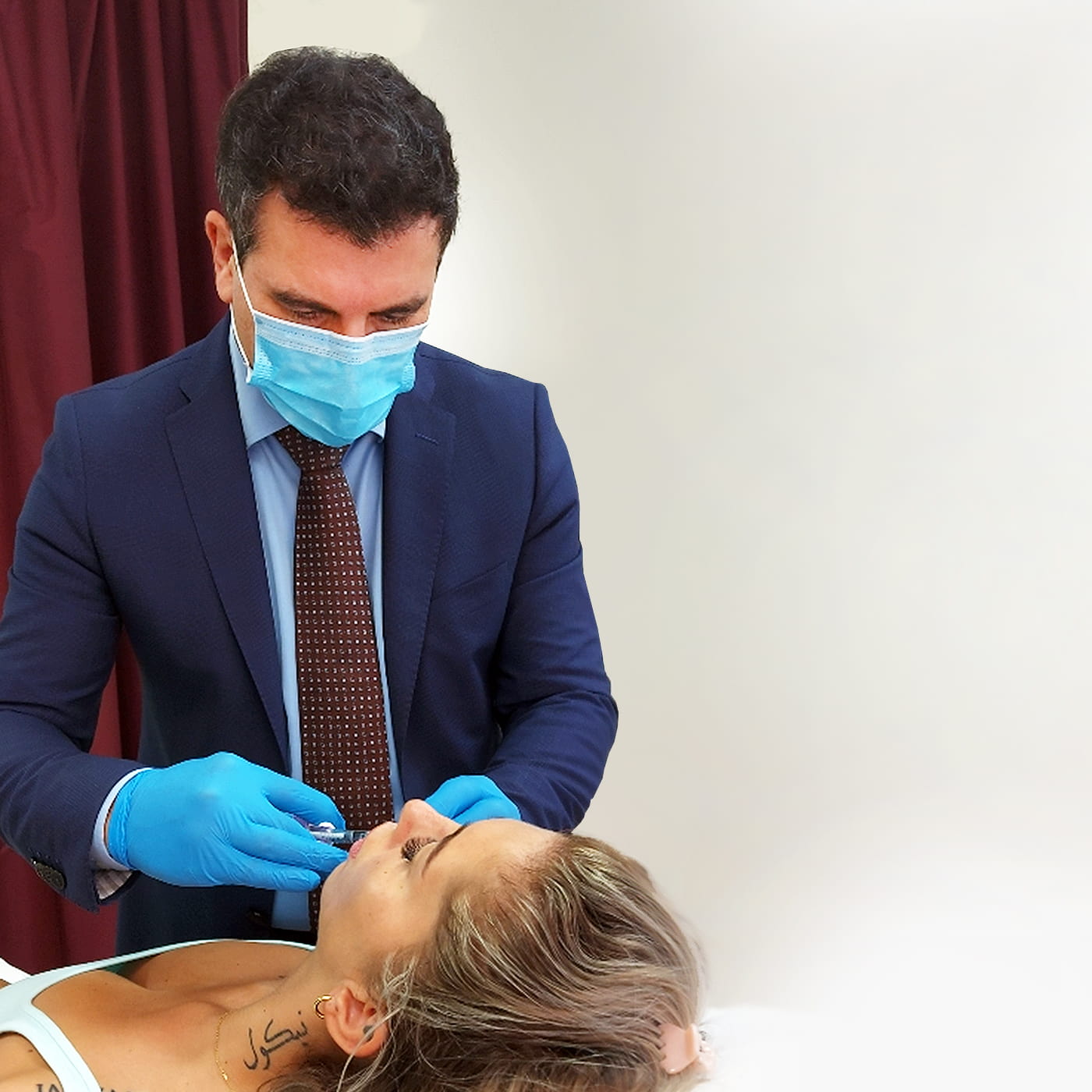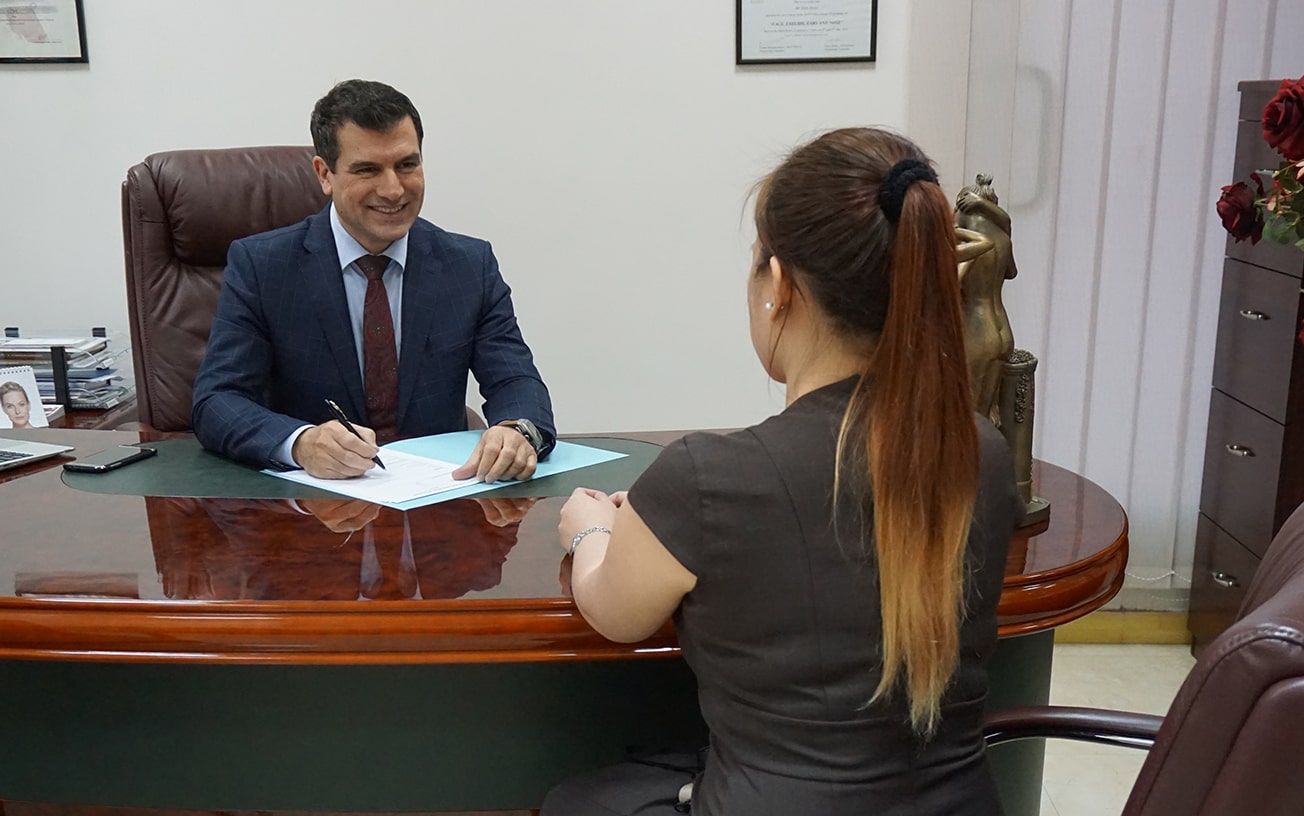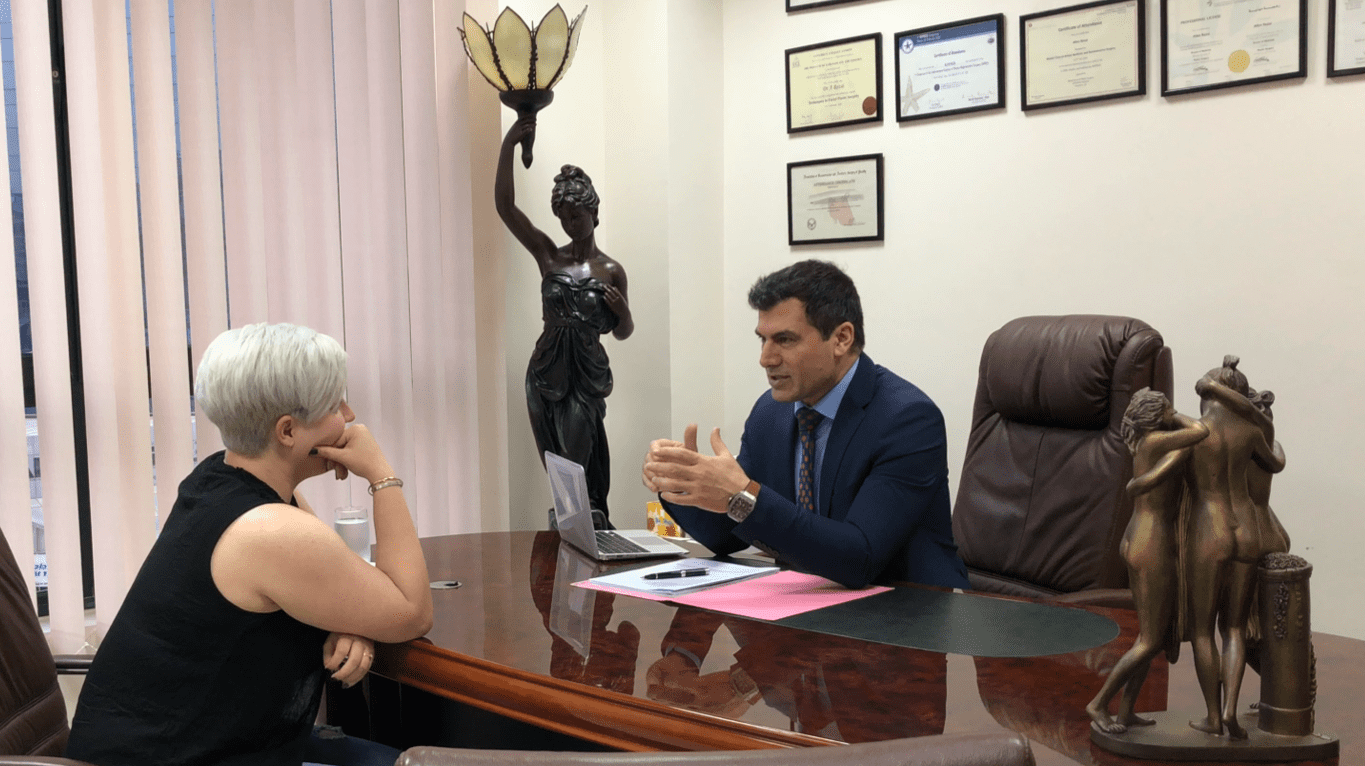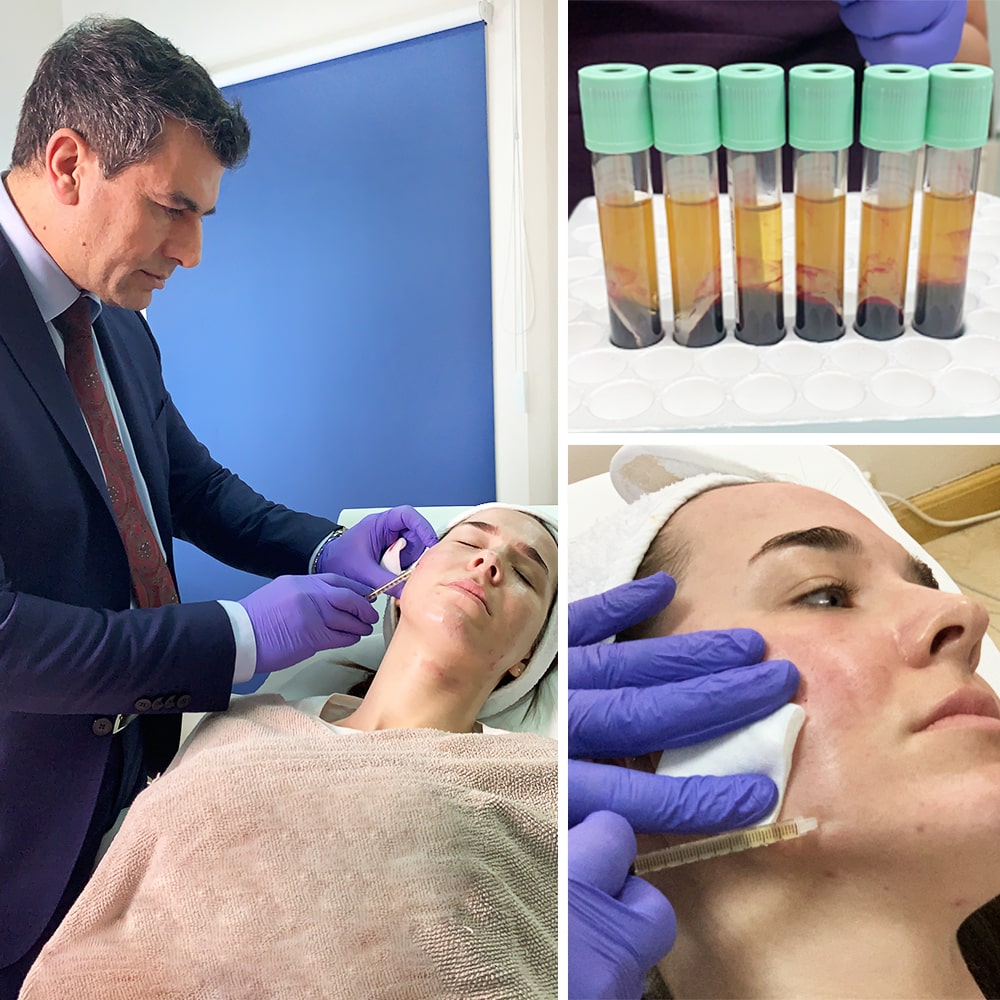The demand for non-surgical cosmetic procedures that slow down the signs of ageing or improve the facial appearance has increased dramatically in recent years.
PRP, Dermal Fillers, Muscle Relaxing Injections… you may have heard of these terms and are possibly aware that they are employed in non-surgical anti-ageing cosmetic procedures. But you may not fully understand what the treatments involve and how they work. Indeed, these brand names and terms, given their growing popularity in anti-ageing treatment, can to many people appear very much alike. However, such an assumption is quite misleading since, aside from the fact that they are all injectables, some of them do in fact belong to different categories of treatment. So, what really is the difference between them?
Mr Allen Rezai explains: “Many patients who come to me for initial consultation to discuss non-surgical procedures in fact do not know the difference between Muscle Relaxing Injection, Fillers and PRP. I don’t blame them, as all these procedures use various injection techniques to rejuvenate the face, and for this reason it can sometimes cause confusion. I therefore regularly find myself explaining to patients the differences between these treatments in terms of how appropriate each is in particular circumstances, how the treatment is given and what results to expect.”
The following is a convenient summary of Mr Rezai’s explanations and guidance which should clarify the use of these treatments which in skilled hands can produce some incredible transformations.
Dermal Fillers - Restore facial volume, enhance the lips and plump up wrinkles and lines

As we age our skin becomes dry and loses the collagen that helps shape and support it resulting in the deepening of natural lines and wrinkles. Sun exposure, smoking, air pollution, gravity, stress and even excessive movements of our facial muscles can all age our appearance. The face’s underlying tissues that once kept our skin looking fresh, youthful and plumped up begin to break down. Dermal Fillers are comprised of an either naturally-derived or synthetic material that is directly injected into skin with the purpose of plumping that area to the point where the wrinkle, depression or fold is gone.
There are various types of Dermal Filler available, but today this term is primarily used in referring to non-permanent resorbable fillers. Despite their classification, temporary fillers have a lengthy duration time – anywhere from 4 to 18 months. Hyaluronic Acid Dermal Fillers are the most widely used fillers within this category and have a very high safety profile. Hyaluronic acid is a substance found naturally occurring in every organism. When we are born, there are plentiful amounts of Hyaluronic Acid in our body. However, as we get older, this store of hyaluronic acid diminishes, leaving the skin less well supported, and resulting in the development of lines and wrinkles.
Hyaluronic acid fillers are a natural skin-hydrating solution aiming to temporarily reverse the effects of ageing and other factors such as damage caused by the sun, smoking, stress and pollution. As Hyaluronic acid already exists in our body, it is very biocompatible and so rarely causes any reactions.
In expert hands Dermal Fillers work exceptionally well and dramatic improvements can be produced, resulting in an astonishingly smoother and rejuvenated look to what was previously a tired and ageing face.
How Dermal Fillers Work
Dermal Fillers come in different viscosities and, in general, the “thicker” the product, the deeper it is injected into the dermal layer of the skin, helping to plump up the creases and sunken areas of the face. This injectable treatment works best on mid- and lower parts of the face, for restoring lost volume in the cheeks, chin and tear troughs (the area situated between the lower eyelid and upper cheek), enhancing the lips, treating deep laughter lines (nasolabial folds), smoker’s lines around the mouth, minor nose deformities, and sunken areas of the face. The dermal filler will immediately plump up the treatment area and over a period of 2-4 weeks, will continue to attract water and settle. For this reason, best results are seen after the elapse of this time.
Dermal Fillers can be used either alone or in combination with other injectable treatments such as PRP Rejuvenation Therapy and Muscle Relaxing injections.
The Dermal Filler Treatment Procedure
Prior to initial treatment, a thorough consultation with a qualified and experienced practitioner is necessary, during which all areas of concern should be assessed. The procedure, including possible risks, complications and after care should also be discussed with you and all your questions should be answered. At this time your practitioner should also advise you of the appropriate filler(s) suitable for addressing your rejuvenation needs.
The procedure typically begins by applying a topical anaesthetic cream to the skin which reduces the pain caused by the injection. Your practitioner then injects the chosen filler into the appropriate site, and may massage the area for few seconds to distribute the filler evenly and achieve the desired effect. With Dermal Filler treatment there is minimal recovery or downtime. Following the treatment, some temporary injection-related reactions may occur, including redness, pain, firmness, swelling, and bumps. These are usually mild to moderate in nature and clear up on their own within a few hours to a couple of days. You should be provided with detailed pre- and post-treatment care instructions.
Results of Dermal Fillers
Immediate improvement is visible following a Dermal Filler treatment. However, it may take up to 4 weeks for the filler to settle in place and achieve an optimum result.
Your practitioner may employ one of several types of Dermal Filler, which vary in longevity from a minimum of 3 months up to 18 months, and sometimes even longer in duration. The longevity of results with dermal fillers depends on a number of individual factors, such as filler composition, skin quality, hydration, metabolism and degree of muscular use within the treatment area, meaning that injections into areas of the face that move frequently during smiling, chewing, talking etc, do not last as long as those in other areas.
Sometimes the longevity of the fillers increases with the number of treatments – some research showing that repeated injections may help stimulate the body’s own natural production of collagen, which also helps reduce the number of lines and wrinkles. There is also some evidence indicating that less filler is needed over time to achieve the same look. Expectations in terms of results and longevity should be discussed with you at your consultation.
Possible Risks and Complications associated with Dermal Filler Treatment
Potential risks and complications of Dermal Filler treatment are minimal, provided genuine quality fillers are used and the treatment is carried out by a qualified and experienced practitioner. Allergic reactions to the hyaluronic acid fillers are exceptionally rare since they are free from animal proteins and completely bio-compatible with the hyaluronic acid already in the human body.
During your consultation you should ask your practitioner to provide you with detailed information about ALL possible risks and complications associated with this treatment.
Advice from Mr Allen Rezai on What you should know about Dermal Filler Treatment

- A thorough initial consultation is essential. You should fully understand all aspects of the procedure and be given time to discuss your concerns and questions with the practitioner before undergoing treatment.
- Cheap is not necessarily best. Don’t base your decision on price alone. There are many varieties of Dermal Filler on the market. Make sure that you are aware of the type being offered and the reasons for it.
- Thoroughly research your Practitioner/Clinic. Word of mouth and recommendations from people you know are usually the most reliable guide.
- Injectable treatments should only be carried out in a clean, safe and appropriate clinical environment, so as to avoid infection and permanent physical damage. Treatments should be carried out in a clinical facility and NOT in a home setting or, for example, a nail bar or tattoo parlour.
- Do not get Dermal Filler treatment from sources outside a doctor’s office. Know what you are being injected with and ask your doctor if a FDA-approved Dermal Filler is being used and if it was purchased directly from the manufacturer or manufacturer’s representative. If a provider will not give you this information, do not let them carry out the procedure.
- Dermal Filler Treatment can be REVERSED if you do not like the result! Hyaluronic acid dermal fillers such as all Juvéderm® range fillers, Perlane® and Restylane® can be dissolved using a Hyaluronidase Injection. Opting for hyaluronic acid Dermal Filler provides the opportunity to reverse the procedure if you decide you don’t like the results.
- Use Sunscreen daily to help preserve the filler and protect against post-inflammatory pigment changes due to the needle sticks from injections.
- Keep hydrated – before and for a few weeks following the Dermal Filler treatment. If your body is dehydrated, the filler will be resorbed much faster than it otherwise would.
Line & Wrinkle Smoothing with Muscle Relaxing Injections

Muscle Relaxing Injections are used medically to treat certain muscular conditions and cosmetically to temporarily relax wrinkle-causing muscles thereby softening and preventing the development of expression lines, creating a smooth and rejuvenated appearance.
Both Botox and Dysport are brand names of a highly purified protein derived from Botulinum Toxin A. Botox is the original and best-known brand name and the most tested product on the market. It is the result of many decades of studies and has been used extensively in medicine. It is the safest product, and it is certified in the medical and cosmetic field. Although Botox and Dysport are very similar in terms of results, there are a few subtle differences.
How Muscle Relaxing Injections Work
Unlike Dermal Filler treatments that work by plumping up the skin or literally filling up lines, muscle relaxing injections target the facial muscles that are causing dynamic or expression wrinkles to form. They work by blocking the nerve impulses to the muscle. As a result, the muscle relaxes and can’t contract, significantly reducing the appearance of lines and wrinkles on the skin above the treated muscle, producing a more youthful and overall smoother appearance.
This blocking effect on the nerves usually lasts an average of 3 to 6 months, at which time the muscle regains movement and wrinkles reappear.
The Muscle Relaxing Injection Procedure
Prior to initial treatment, a thorough consultation with a qualified and experienced practitioner is necessary, during which you will be assessed and the procedure, including possible risks, complications and after care, should be discussed with you and all your questions answered. You should only proceed with treatment if you have the right indications (i.e. is totally appropriate in your particular circumstances) and fully understand all aspects of it.
The treatment is carried out by injecting a small amount of the product into the area(s) to be treated using a very fine needle. Because the needle is so fine and only a small amount of liquid is used, the pain associated with the injections is minimal.
Following the procedure, you may experience minor temporary side effects such as localised inflammation, including redness, swelling, heat and small lumps at the treatment site. These symptoms are rare and will usually subside within a couple of days. There is also the potential for minor bruising at the treatment site, which is usually easily concealed with makeup.
You should be provided with detailed pre- and post- treatment care instructions.
Results of Muscle Relaxing Injections
The effects of muscle relaxing injections wear off naturally over time. Results of the treatment will typically become visible within 4 to 7 days, however it can take up to two weeks to obtain the optimum result. Also, depending on a person’s lifestyle and how their muscles react to the treatment, the effects of treatment may last from 3 to 6 months and the treatment should not be repeated more than two or a maximum of three times per year. You should allow for your muscles to gain full movement before repeating the treatment.
Possible Risks and complications associated with Muscle Relaxing Injections
Provided the treatment is carried out by a suitably qualified and experienced practitioner, associated complications are relatively rare. However, you should ask your practitioner to provide you with detailed information about ALL possible risks and complications associated with this treatment.
Advice from Mr Allen Rezai on What you should know about Muscle Relaxing Injections

- Aesthetic use of muscle relaxing injections has only been approved to treat the upper part of the face: areas such as the forehead, to treat horizontal wrinkles, the glabella in between the eyes, and the lateral sides of the eye to treat crow’s feet wrinkles. Some providers use muscle relaxing injections in other areas of the face but these are considered to be “off-label” use.
- Muscles Relaxing Injections are also proven to be effective in the reduction of Hyperhidrosis (excessive sweating) and for Migraine
- Units vs. Area – In the US, Muscle Relaxing Injections are charged per unit and in the UK by area, where the frown lines are considered one area, the forehead a second area and crow’s feet a third area. A reduced rate is often given when treating multiple areas.
- Thoroughly research your Practitioner/Clinic. Word of mouth and recommendations from people you know are usually the most reliable guide.
- Treatment should be carried out in a medical setting using sterile needles and syringes.
- Beware of Cheap Muscle Relaxing Injections providers. Cheap Muscle Relaxing Injections usually comes at a price. It usually means it is counterfeit, diluted, or administered by an inexperienced, non-qualified practitioner.
- Injectable treatments should only be carried out in a clean, safe and appropriate clinical environment to avoid infection and permanent physical damage. Treatments should be carried out in a clinical facility and NOT in a home setting or, for example, a nail bar or tattoo parlour.
- A good practitioner will have a through initial consultation with you, check your medical history, listen to your concerns, cover all aspects of the procedure, including possible risks and complications, and provide you with a bespoke treatment plan to achieve the best possible outcome. You should always be given enough time to make an informed decision and you should NEVER feel rushed.
- Typically, patients will come into the clinic and point to a specific line that they don’t like. Good practitioners shouldn’t just look at treating this specific line, but will look beyond the line at how the face looks as a whole, as treating just one individual line might make the face look unnatural or create new lines in nearby areas.
- Avoid the “Frozen look”. You should not lose the ability to show expression when you are treated by someone who is licensed, trained, and a medical expert in facial anatomy.
- Excessive and frequent use of muscle relaxing injections may cause long term complications such as heavy and drooping upper face, hence it is strongly recommended that you limit your muscle relaxing injection treatments to 2, maximum 3, per year and only if there is the right indication present for the latter.
- Aim for Natural Results. Treatment should be adapted to the individual patient’s need to achieve a subtle, natural look which softens the lines and wrinkles, producing a more youthful and overall smoother appearance yet still permits normal facial movement.
- Aftercare is an important aspect of any treatment. You should always ask the practitioner about the aftercare provided, especially if anything were to go wrong.
- Never feel pressured into undergoing a treatment without fully understanding all the implications.
Platelet Rich Plasma (PRP) Therapy – Repair, Restore & Rejuvenate

Although PRP for facial rejuvenation is an injectable treatment, it works very differently from Muscle Relaxing Injections and Dermal Fillers. With PRP Therapy, the patient is injected with a natural product produced from her or his own body. The PRP works to stimulate collagen production and cell renewal, which provides overall facial rejuvenation. On the other hand, Muscle Relaxing Injections and Dermal Fillers are injected directly into individual wrinkles or facial muscles, providing more localised results.
Benefits of PRP Therapy
- Improves tone, texture and brightness of skin
- Skin is firmed and tightened
- Wrinkles and lines are softened
- Skin’s rosy glow is restored
- Skin softness is increased
- Facial volume depletion can be improved
- Sun-damage, acne scars, Rosacea, dark circles and Hyperpigmentation are also improved.
How does PRP Therapy work?
The aim with PRP rejuvenation therapy is to stimulate collagen production, thereby improving skin tone and texture, tighten skin, and soften lines and pores. The procedure involves a small amount of blood being drawn from the patient, which is then centrifuged to separate the red blood cells from the Plasma – producing a golden-yellow liquid known as PRP (Platelet Rich Plasma). PRP is the concentrated part of the blood that contains the platelets which are fundamental to the body’s ability to stop any bleeding and repair damaged blood vessels and cells. Platelets contain substances known as growth factors that activate and rejuvenate cells in order to generate new tissue.
The PRP is then injected into the deep dermis or fat layer of the skin using a very fine needle, similar to that used for Muscle Relaxing Injections. The various proteins and growth factors in the PRP promote collagen growth and cell renewal and repair, thus improving skin texture, elasticity, colour and tone, resulting in a naturally healthier younger looking appearance.
There is minimal to no downtime following PRP therapy, however some minor swelling, bruising to a varying degree, and redness for 12-24 hours should be expected following treatment.
You should receive detailed pre- and post- treatment care instructions from your practitioner.
Results of PRP Therapy
For optimum results, a course of 3-5 treatments, 4-6 weeks apart is advisable. Results of the treatment vary depending on the age, genetic makeup and overall health and condition of the skin. Improvement of skin tone and texture begin to show 3-4 weeks after the treatment session and continue to improve with time. The proteins contained in the PRP gradually increase the formation of collagen and connective tissue, promoting tightening and overall skin rejuvenation. Full collagen regeneration will be completed within about 3 months.
The tissue that has been regenerated and remodelled is permanent, however the ageing process cannot be stopped, and as we age the problem areas will eventually reappear. Therefore to maintain the result, touch-up treatments are recommended at an interval of 6-24 months depending on a patient’s age and skin condition.
Results may not be very effective for patients who smoke, consume excessive amounts of alcohol or take drugs, because the quality of PRP is typically low in such cases.
Possible Risks and Complications associated with PRP Therapy
There are no risks associated with PRP therapy. Because PRP is harvested from the patient’s own blood, there is no chance of experiencing any serious side effects or allergic reaction. In addition, PRP contains a concentrated amount of white blood cells which are the body’s natural defenders against infections. As a result, infection is extremely rare.
Advice from Mr Allen Rezai on What you should know about PRP Therapy

- A thorough initial consultation is essential. You should fully understand all aspects of the procedure and be given time to discuss your concerns and questions with the practitioner before undergoing treatment.
- Thoroughly research your Practitioner/Clinic. Word of mouth and recommendations from people you know are usually the most reliable guide.
- Cheap is not always best. Don’t base your decision on price alone. Find out how many syringes of PRP are used per treatment. In our practice typically 17-21 syringes of PRP are used in a session to treat the whole face.
- Treatments should only be carried out in a clean, safe and appropriate clinical environment, so as to avoid infection and permanent physical damage. Treatments should be carried out in a clinical facility and NOT in a home setting or, for example, a nail bar or tattoo parlour.
“In my practice, we believe not only in educating every one of my patients as to what is available and appropriate, but also in formulating a bespoke treatment plan for each individual. We understand that everyone that walks through our doors is unique – with different anatomy, lifestyle, goals and personal circumstances. I also believe that truly successful results are achieved not only through technical excellence, but also with outcomes that best fit a patient’s needs and desires. Having treatment with us is a consultative process – we want to understand what it is you want to achieve, and guide you towards the best and most cost-effective way of achieving it.”
Mr Allen Rezai






